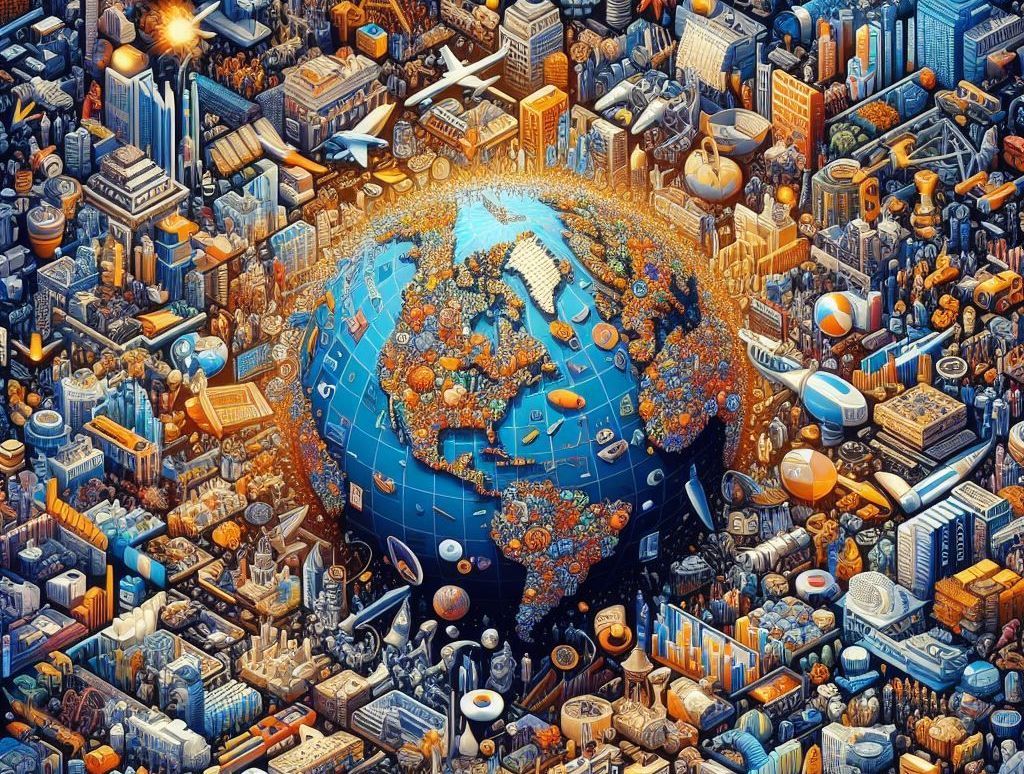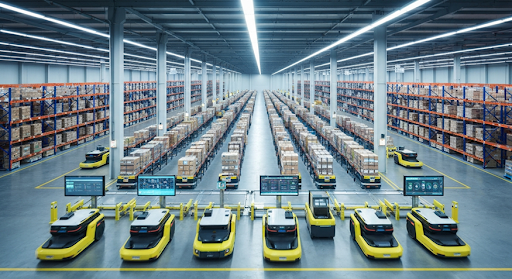Types of Industry
What is Industry
Industry refers to the economic activities involved in producing goods, providing services, or engaging in research and development. It's a broad term encompassing sectors from manufacturing and agriculture to technology and services. Industries are vital for economic growth, employment, and innovation, influencing daily life and global markets. They evolve with technological advancements and market demands, shaping and being shaped by economic, social, and environmental factors.
4 Types of Industry and Examples
Industries are classified into four main types: Primary (extraction and agriculture), Secondary (manufacturing and construction), Tertiary (services like healthcare and education), and Quaternary (knowledge and information sectors). These categories illustrate the diverse ways industries contribute to the economy, from resource extraction to advanced technological services, each playing a unique role in societal development and economic growth.

15 Types of Industries
The economy comprises various industries, each distinct in its function and contribution. These include Agriculture, Construction, Education, Finance, Healthcare, IT, Manufacturing, Mining, Pharmaceuticals, Real Estate, Retail, Telecommunications, Tourism, Transportation, and Utilities. These sectors demonstrate the vastness and diversity of the industrial landscape, highlighting how each industry plays a pivotal role in shaping our world, driving economic growth, and meeting the needs of society.
What is your Industry Example
Your industry example embodies the specific sector of the economy where your business or professional expertise lies. Whether it's technology, healthcare, education, or manufacturing, your industry shapes the context in which you operate, innovate, and compete. Understanding your industry's dynamics, trends, and key players offers insights into your role and potential impact within the larger economic landscape. By identifying and articulating your industry example, you clarify your niche, target audience, and strategic focus, enabling more informed decisions and tailored strategies for success.
List of Industries in the World

The world's economy is a mosaic of diverse industries, each contributing uniquely to global growth and development. From agriculture, technology, and manufacturing to healthcare, finance, and entertainment, the array of sectors is vast and varied. This list of industries reflects the myriad ways in which businesses operate, innovate, and serve communities across the globe. Understanding this diversity is crucial for anyone looking to navigate the complex web of global commerce, identify opportunities, or simply grasp the scope of human economic activity.
Types of Industries List
The types of industries list categorizes the various sectors that define the global economic landscape, offering a structured way to understand the vast array of business activities. This list typically includes primary industries like agriculture and mining, secondary industries such as manufacturing and construction, and tertiary sectors including services like healthcare, education, and finance. Additionally, the quaternary sector, focusing on knowledge-based activities such as research and information technology, highlights the evolving nature of industry. Such a list is instrumental for professionals, students, and policymakers to analyze economic trends, identify growth sectors, and make informed decisions in a complex, interconnected world.
What are the 3 Industry Types
The classification of industries into three main types offers a simplified view of the economic landscape. These include the primary sector, which focuses on raw material extraction and agriculture; the secondary sector, centered on manufacturing and processing; and the tertiary sector, which encompasses services. This division helps in understanding the fundamental roles different industries play in the economy, from resource extraction to product creation and service delivery.
Different Types of Industries with Examples
Each industry type has distinct characteristics and examples. The primary sector includes agriculture and mining, the secondary involves industries like automotive manufacturing and textile production, while the tertiary sector covers services such as banking, healthcare, and education. These examples illustrate the diversity and specialization within each industry type.
4 Types of Business Sectors
While traditionally industries are classified into three types, a fourth type, the quaternary sector, is increasingly recognized. This sector includes knowledge-oriented services like information technology, research, and education. Including this sector provides a more comprehensive view of today's complex and technology-driven economy.

What are the 4 Types of Industry
The four types of industry offer a nuanced understanding of the economic sectors, providing insights into the varied nature of business operations and their contributions to society.
Type of Industry Examples
Examples of the four industry types include agriculture for the primary, manufacturing for the secondary, retail for the tertiary, and data analysis for the quaternary. These examples highlight the range of activities and services that categorize the economic sectors.
Job Industry Examples
The job industry examples reflect the employment opportunities and career paths within the sectors. From farmers in the primary sector to engineers in the secondary, salespeople in the tertiary, and data scientists in the quaternary, the job landscapes are as varied as the industries themselves.
What are the 5 Levels of Industry
The five levels of industry classification introduce an additional layer to the standard model, breaking down the sectors further to reflect more specific activities and functions. This expanded framework provides a deeper understanding of the interconnections and specializations within the global economy.

What are the 4 Sectors of Industry
Expanding on the traditional three sectors, the four sectors of industry include the primary, secondary, tertiary, and quaternary sectors, each representing a different facet of economic activity and specialization.
Primary Industry
The primary industry is the backbone of the economy, focusing on extracting and harvesting natural resources. This sector is crucial for supplying raw materials to other industries, underpinning the entire economic structure and supporting subsequent industry sectors.



